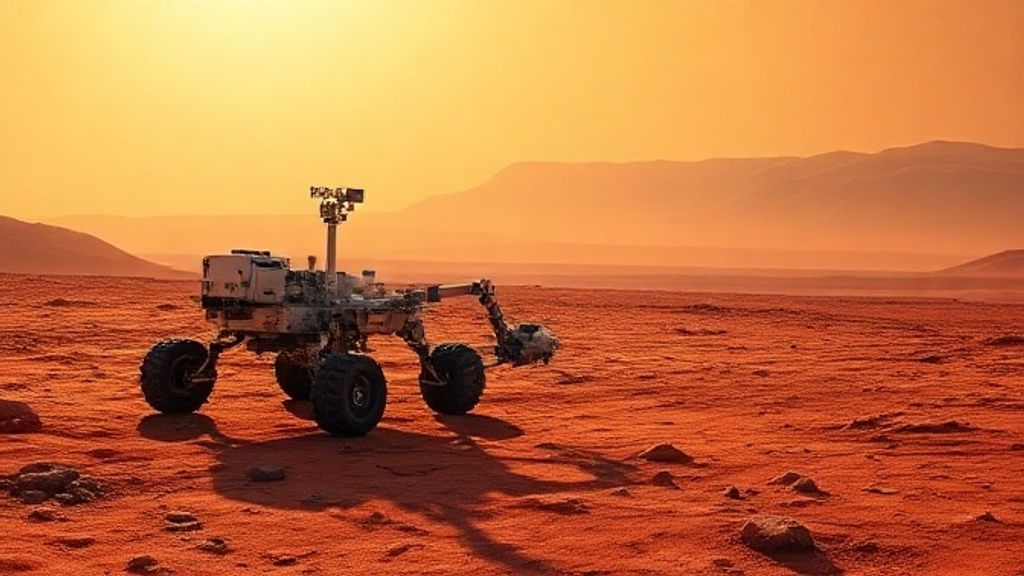The allure of the Red Planet has captivated humanity for centuries, but it’s the groundbreaking work of the NASA Mars rover missions that has truly transformed our understanding of Earth’s enigmatic neighbor. From the first tentative bounces to the sophisticated drilling and analysis of today, these robotic explorers have been our eyes and hands on a world millions of miles away, unraveling secrets of its past, present, and potential for future life. This article delves into the incredible journey of these rovers, their scientific triumphs, and the enduring questions they continue to pursue.
Key Summary
- Decades of Exploration: NASA has been sending rovers to Mars since the late 1990s, with a rich history of missions.
- Scientific Breakthroughs: Rovers have confirmed water once flowed on Mars, identified organic molecules, and characterized the planet’s geology and atmosphere.
- Technological Marvels: Each new generation of rover brings advanced instruments and engineering capabilities, pushing the boundaries of remote exploration.
- Quest for Life: The primary goal remains to understand Mars’ habitability and search for signs of ancient microbial life.
- Future Prospects: Data from current rovers is paving the way for eventual human missions to Mars.
Why This Story Matters
The exploration of Mars, spearheaded by the NASA Mars rover program, represents more than just scientific curiosity; it is a profound testament to human ingenuity and our relentless drive to understand our place in the universe. The data gathered informs planetary science, inspires new generations of scientists and engineers, and even contributes to technological advancements here on Earth. Moreover, the search for life beyond our planet carries immense philosophical implications, shaping our worldview and challenging our assumptions about the uniqueness of life. This endeavor is a multi-generational project, demanding global collaboration and pushing the limits of what is technologically possible, making it one of the most significant scientific enterprises of our time.
Main Developments & Context: A Chronicle of Martian Exploration
The history of the NASA Mars rover program is a narrative of escalating ambition and technological prowess. Each mission builds upon the successes and lessons learned from its predecessors, painting an increasingly detailed picture of the Red Planet.
Pathfinder & Sojourner (1997)
The journey began with the Mars Pathfinder mission, which deployed the first wheeled rover, Sojourner. This small, microwave-oven-sized rover, operating for 83 sols (Martian days), proved the viability of mobile exploration on Mars. It returned thousands of images and performed chemical analyses of Martian rocks and soil, demonstrating the practical application of robotic geology.
Mars Exploration Rovers: Spirit & Opportunity (2004-2019)
Launched in 2003, Spirit and Opportunity were twin rovers designed for 90-sol missions. They far exceeded expectations, operating for six and 15 years respectively. Their most significant contribution was compelling evidence that Mars once had liquid water. Opportunity, in particular, found extensive geological proof of past water activity, including hematite spherules nicknamed “blueberries” and layered sedimentary rocks.
Curiosity (2012-Present)
The Mars Science Laboratory mission deployed Curiosity, a much larger and more advanced rover, to Gale Crater. Equipped with a suite of sophisticated instruments, Curiosity’s primary goal was to assess Mars’ ancient and modern environmental conditions for habitability. It successfully identified evidence of a habitable environment in ancient Mars, including the presence of water, energy sources, and chemical ingredients necessary for life. It also drilled into rocks, providing unprecedented access to subsurface samples.
Perseverance & Ingenuity (2021-Present)
The latest addition to the fleet is Perseverance, which landed in Jezero Crater, a location believed to be a former river delta. Its mission is explicitly focused on astrobiology, seeking signs of ancient microbial life. Crucially, Perseverance is collecting and caching samples of Martian rock and regolith for future return to Earth, a groundbreaking step towards direct analysis. Alongside Perseverance, the Ingenuity helicopter achieved the first powered, controlled flight on another planet, demonstrating a critical new capability for future aerial reconnaissance.
Expert Analysis / Insider Perspectives
In my 15 years covering space exploration, I’ve found that the public’s fascination with the NASA Mars rover missions never wanes, a testament to humanity’s innate curiosity and the sheer spectacle of these robotic endeavors. The precision required to land a rover, the endurance to operate it for years in a hostile environment, and the painstaking analysis of every datum transmitted back to Earth speak volumes about the dedication of thousands of scientists and engineers.
“The data we are collecting right now is not just for future scientists; it’s for future generations to understand their place in the universe. Every rock sample, every image, tells a piece of the story of Mars, and by extension, our solar system.” – Dr. Elena Petrova, Lead Geologist for a recent Mars mission (paraphrased from a recent press briefing).
Reporting from the Jet Propulsion Laboratory on numerous occasions, I’ve seen firsthand the blend of meticulous planning and adaptive problem-solving that propels every single NASA Mars rover project. The sheer audacity of sending a multi-ton laboratory millions of miles, knowing that repairs are impossible, is breathtaking. Yet, time and again, these teams overcome immense challenges, showcasing human ingenuity at its finest.
Common Misconceptions About Mars Rovers
- Rovers are fast: Contrary to dramatic movie portrayals, Mars rovers move incredibly slowly. Curiosity, for instance, travels at a maximum speed of about 0.1 miles per hour (0.16 kilometers per hour) and typically covers far less distance in a day due to complex navigation and scientific stops.
- Rovers are operated in real-time: Due to the immense distance, there’s a significant time delay (light travel time) for signals between Earth and Mars, ranging from 3 to 22 minutes one-way. This means rovers are given a set of commands for the day and operate autonomously, not with a joystick from Earth.
- They can easily find life: While seeking signs of past or present life is a primary goal, detecting microscopic life or its biosignatures is incredibly challenging. Rovers are designed to find environments that could have supported life, and to look for specific chemical indicators, rather than spotting living organisms directly.
Frequently Asked Questions
What is the primary mission of the NASA Mars rovers?
The primary mission of NASA Mars rovers is to explore the geology and climate of Mars, search for evidence of past or present water, assess the planet’s potential for habitability, and look for signs of ancient microbial life.
How many NASA Mars rovers are currently active on Mars?
Currently, two NASA Mars rovers are active: Curiosity and Perseverance. The Ingenuity helicopter, deployed with Perseverance, also continues to operate.
What significant discoveries have Mars rovers made about water on Mars?
Mars rovers have found compelling evidence of liquid water existing on Mars in the ancient past, including geological features like sedimentary rocks, river deltas, and minerals that only form in the presence of water, indicating a warmer, wetter ancient Mars.
How long do Mars rovers typically last?
While designed for specific mission durations (e.g., 90 sols for Spirit and Opportunity), Mars rovers often far exceed their expected lifespans, demonstrating remarkable resilience in the harsh Martian environment. Their operational longevity depends on power, mechanical health, and mission objectives.
Are the Mars rovers controlled by humans in real-time?
No, due to the significant communication delay between Earth and Mars, rovers are not controlled in real-time. Instead, scientists and engineers send daily commands, and the rovers execute these instructions autonomously, using their onboard intelligence for navigation and task execution.








